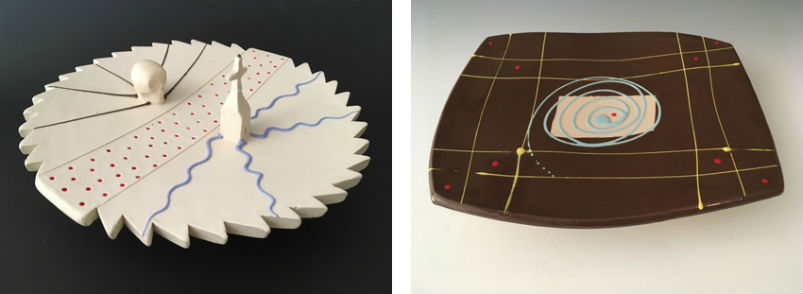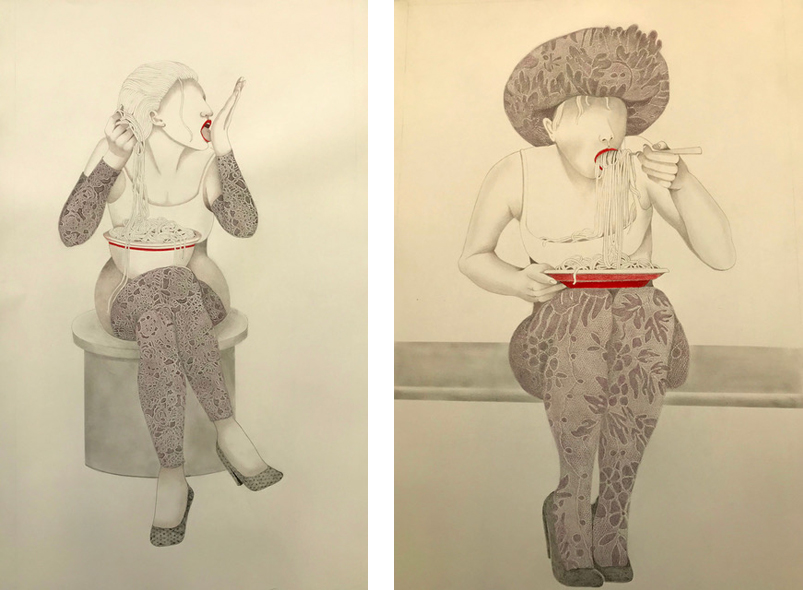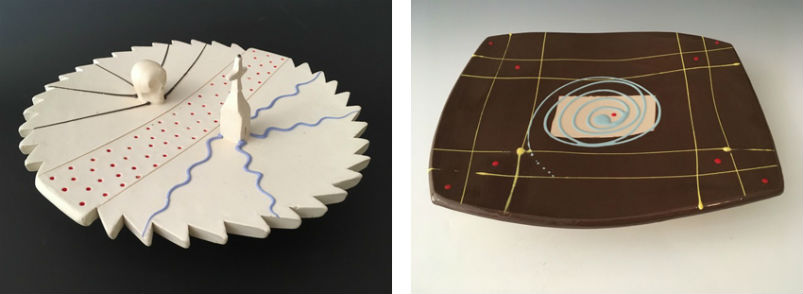Swirls, Squiggles, and Spaghetti || Alameda 6
Event Category: Art Openings and Exhibits
-
Swirls, Squiggles, and Spaghetti
Sunday, November 10th, 2019,
from 2:00 pm to 5:00 pmAlameda 6
Eating spaghetti with one’s hands was once a Neapolitan street spectacle. Pasta had been first brought to Sicily by Arab merchants in the 12th century. Three hundred years later it made it’s way to Naples. My father’s side of the family is from Sicily and my mother’s side of the family is from Naples.
From the 17th to 19th centuries, macaroni, which was the term used for all pasta, was a street food. Like other street foods, macaroni was eaten not with a fork but with one’s hands. The macaroni, which looks like today’s spaghetti, would have been fished out of boiling water and handed over to hungry people who then lowered fistfuls of the spaghetti into their mouths in one gulp. These were the macaroni eaters of Naples.
This is my heritage. My Italian American family ate macaroni three times a week. Inspired by the story I created ten pencil drawings with a contemporary twist. The series, titled “Spaghetti Eaters,” shows women eating coils of spaghetti from small cups, large bowls and flat plates. Two of the images play on the concept of spaghetti westerns. Wearing cowboy boots and hats, one woman eats from a pot, the other from the barrel of a gun. Two more images show women in lacy leggings and high heels cramming handfuls of pasta into lipsticked mouths. The “Patron Saint of Spaghetti Eaters” kneels and prays over a plate of pasta. The drawings wriggle with humor.
To compliment the drawings, Joe Molinaro, whose ancestors hail from Lenola, Italy, brings his exploration of the vessel to the exhibition. He works in clay giving attention to form and surface while maintaining respect for the utilitarian aspects of pottery making. His plates have swirls and squiggles similar to the curls of spaghetti. Some of the plates have jagged edges seemingly ready to bite.
In newer vessels Molinaro reflects on issues related to immigration, borders and children in cages. The border may be represented by a two inch band punctured with red holes crossing the diameter of the plate. On one side of this pockmarked border stands a church and on the other side sits a skull. This is food for thought.
Molinaro has a BS from Ball State University and an MFA from southern Illinois University. He is a Faculty Emeritus at Eastern Kentucky University. He has written many articles and a book on ceramics. He has received two Fulbright awards for research on ceramics in Ecuador. He resides in San Miguel where he maintains a ceramic studio.
Cammarata has a BA from Montclair State University. She has taught in two museums. She was the Printmaking Professor at University MA of Lowell. Her work is in numerous corporate and private collections. She has had a studio in San Miguel for eight years.


-
-

